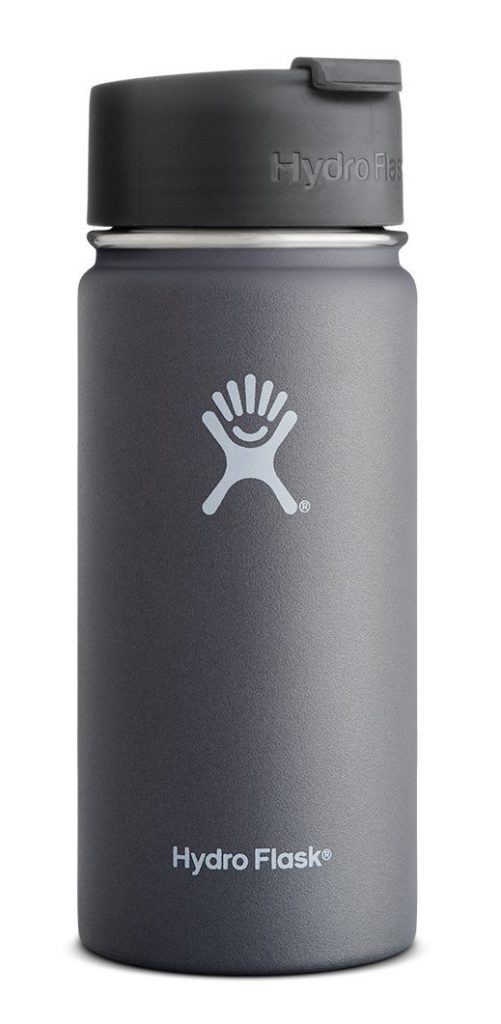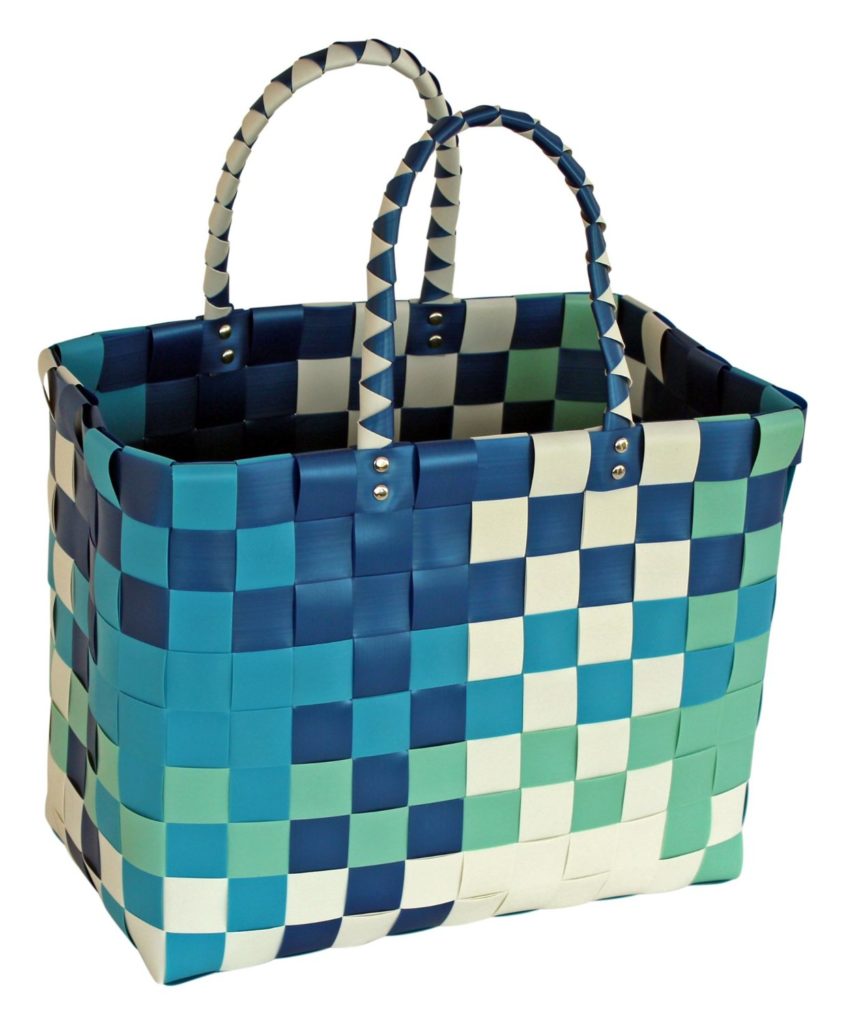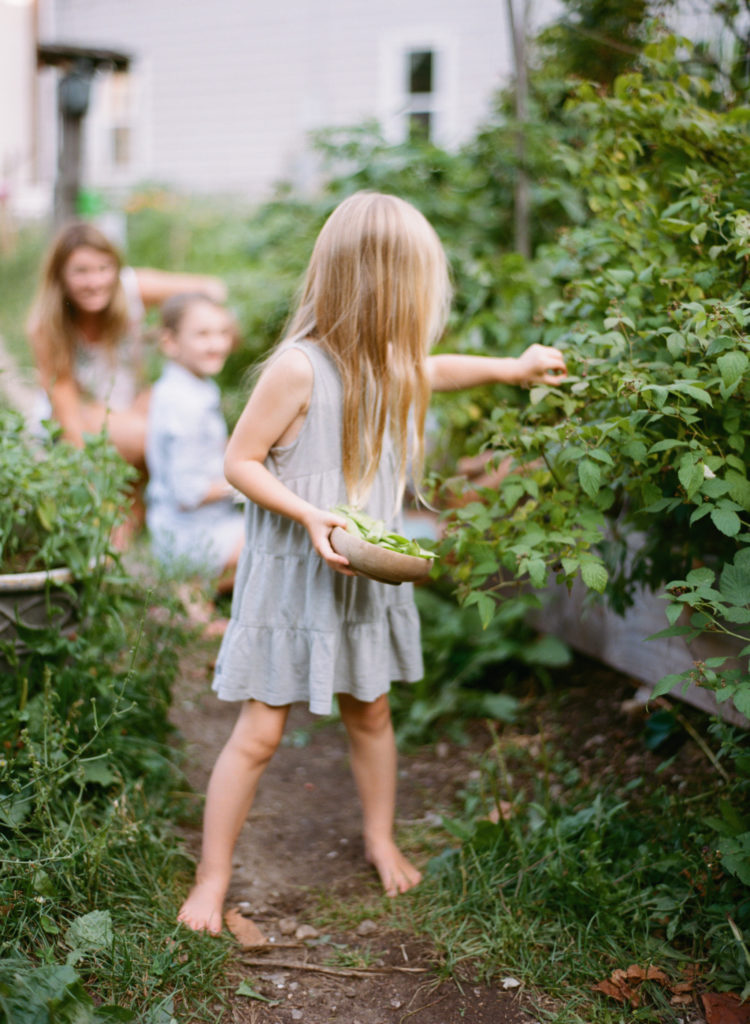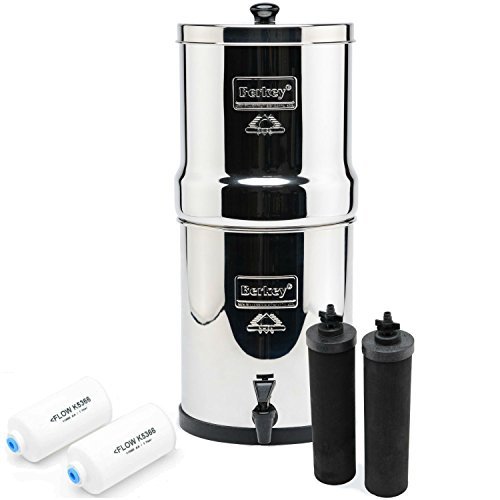Being “more sustainable” can seem like a daunting task. The fact is, small daily actions can really add up, and also save you a TON of money if you look at it on a yearly basis. When I wrote The Homegrown Paleo Cookbook, I came up with this handy “anti-shopping list”:

Here is a list of 10 things you can do right now that will save you money AND help you be more sustainable in the process:
Start with your morning cup of coffee.
According to the Statistic Brain Research Institute, about 100 million Americans enjoy a daily cup of coffee (or two), spending upwards of $18 Billion per year. What may seem like a small, marginal habit, can really add up when you think about all of those paper cups and all of those beans! Two ways that YOU can be more sustainable and save money while you do it when it comes to your daily brew: Buy the beans and brew at home, or bring a travel mug with you to your favorite shop instead of getting a new paper cup each time.
Tactic 1: Make your own.
 If you spend $2.75 on a cup of coffee at a shop every day, that adds up to $1003.75 per year (and that’s only one cup per day). If, instead, you bought a pound of fair trade organic coffee at say, $12.50/lb (which yields between 32-24 cups of coffee) every two weeks and made if at home, you’d end up saving about $700 a year! That’s nothing to sneeze at! Not to mention all of the paper cups you wont be throwing in the trash. Why buy organic? Coffee is one of the most widely-traded commodities in the world, and in turn, one of the most heavily chemically treated. From Equal Exchange, “It is steeped in synthetic fertilizers, pesticides, herbicides, fungicides, and insecticides – a real mouthful with a bad taste. Not only does the environment suffer from this overload, but so do the people who live in it. Farmers are exposed to a high level of chemicals while spraying the crops and while handling them during harvest. The surrounding communities are also impacted through chemical residues in the air and water. These chemical presences are not just unpleasant; many are highly toxic and detrimental to human health.” Spending the extra dollar or two per pound on fair-trade, organic beans, is a very low cost way to have an impact and support sustainable practices.
If you spend $2.75 on a cup of coffee at a shop every day, that adds up to $1003.75 per year (and that’s only one cup per day). If, instead, you bought a pound of fair trade organic coffee at say, $12.50/lb (which yields between 32-24 cups of coffee) every two weeks and made if at home, you’d end up saving about $700 a year! That’s nothing to sneeze at! Not to mention all of the paper cups you wont be throwing in the trash. Why buy organic? Coffee is one of the most widely-traded commodities in the world, and in turn, one of the most heavily chemically treated. From Equal Exchange, “It is steeped in synthetic fertilizers, pesticides, herbicides, fungicides, and insecticides – a real mouthful with a bad taste. Not only does the environment suffer from this overload, but so do the people who live in it. Farmers are exposed to a high level of chemicals while spraying the crops and while handling them during harvest. The surrounding communities are also impacted through chemical residues in the air and water. These chemical presences are not just unpleasant; many are highly toxic and detrimental to human health.” Spending the extra dollar or two per pound on fair-trade, organic beans, is a very low cost way to have an impact and support sustainable practices.
Tactic B: When buying coffee out, bring a mug!
 It’s estimated that 14 billion paper coffee cups are thrown away every year. That’s enough to circle the Earth more than 55 times! Not to mention the 25 million estimated styrofoam cups that wind up in the trash. Buying a travel mug, like this one, not only keeps your brew warmer longer, but stops YOU from adding to that pile. Many coffee shops will even give you a discount (albeit a small one) for bringing your own mug. Drinking coffee AT the store? Ask for a ceramic mug instead of paper. Most cafes and bakeries HAVE actual mugs behind the counter for stay-in customers. All you have to do is ask!
It’s estimated that 14 billion paper coffee cups are thrown away every year. That’s enough to circle the Earth more than 55 times! Not to mention the 25 million estimated styrofoam cups that wind up in the trash. Buying a travel mug, like this one, not only keeps your brew warmer longer, but stops YOU from adding to that pile. Many coffee shops will even give you a discount (albeit a small one) for bringing your own mug. Drinking coffee AT the store? Ask for a ceramic mug instead of paper. Most cafes and bakeries HAVE actual mugs behind the counter for stay-in customers. All you have to do is ask!
2 Use reusable bags at the grocery store
 Switching to reusable grocery bags may be one of the simplest (and most obvious) ways to decrease the trash you create. Think about how many paper and plastic bags get thrown away every year with every single household out there doing weekly grocery runs. The answer is: Most grocery stores these days will offer reusable bags that you can buy right there. Often, they even come with a discount later on. For example, at Whole Foods, you’ll get 10 cents back for every reusable bag you use. .50/week for the year and you end up saving $26 per year for doing virtually nothing and eliminating heaps of trash that you would have been leaving behind. I love the “Doooka” bag, pictured here because it’s sturdy, easy to clean, and made from recycled plastic.
Switching to reusable grocery bags may be one of the simplest (and most obvious) ways to decrease the trash you create. Think about how many paper and plastic bags get thrown away every year with every single household out there doing weekly grocery runs. The answer is: Most grocery stores these days will offer reusable bags that you can buy right there. Often, they even come with a discount later on. For example, at Whole Foods, you’ll get 10 cents back for every reusable bag you use. .50/week for the year and you end up saving $26 per year for doing virtually nothing and eliminating heaps of trash that you would have been leaving behind. I love the “Doooka” bag, pictured here because it’s sturdy, easy to clean, and made from recycled plastic.
3 Skip a dinner out and have ‘Chopped’ night instead!
We all usually end the week with a random collection of leftover and unused groceries from the week in the fridge. Instead of heading out for a meal that includes tax, tip, and drinks, use what you’ve got! Have a ‘use it up’ night instead! Stretch your cooking muscles and avoid having to trash the unused food on Monday. My kids think it’s super fun, and it’s usually so much healthier than eating at a restaurant.
4 Change Your Meaty Mindset
Buying local, sustainably raised beef, pork and poultry is an essential part of adding to a healthy ecology AND economy. Admittedly, 100% grass-fed, perfect proteins can be pricey when they’re regulars on the weekly menu. You can cut your costs by getting your dose of proteins from places other than expensive cuts of steak. Eating more pastured eggs, ground beef, ground pork, and diving into the ‘odd bits’ such as organ meats or cheaper cuts like beef cheeks allows you to not only keep your protein intake at a healthy place, but now you’re using more of that properly raised livestock than just the perfect parts. Nose-to-tail eating isn’t only money saving: a typical grass-fed NY strip can run anywhere form $23.99/lb-$29.99/lb where as a pound of beef liver runs from $8.99-$9.99 and cheeks between $10.99 and $11.99. Looking for an online source for meat? Check out Butcher Box (and get a free package of bacon with your first order), and I also love Honest Bison!
5 Invest in a filter, and ditch bottled water.
 Water. The essence of life. Did you know that dehydration is the most common nutritional deficiency in the US? Seriously! We’re a chronically dehydrated bunch. It’s so very important to drink adequate amounts of water, but it’s equally as important to drink clean, quality H2O. Plastic bottles are a huge strain on the environment AND your health. The plastics that leach into the typical bottled water have been linked to health issues like hormonal disorders. Sadly, we can’t always count on our tap water, as much of it is chemically treated and often contains. Americans spent $11.8 BILLION on bottled water in 2012 with the average American spending $100/year on the stuff. However, for those of us who drink at least a bottle a day, we’re talking over $400/year! Check out this my favorite glass water bottles.
Water. The essence of life. Did you know that dehydration is the most common nutritional deficiency in the US? Seriously! We’re a chronically dehydrated bunch. It’s so very important to drink adequate amounts of water, but it’s equally as important to drink clean, quality H2O. Plastic bottles are a huge strain on the environment AND your health. The plastics that leach into the typical bottled water have been linked to health issues like hormonal disorders. Sadly, we can’t always count on our tap water, as much of it is chemically treated and often contains. Americans spent $11.8 BILLION on bottled water in 2012 with the average American spending $100/year on the stuff. However, for those of us who drink at least a bottle a day, we’re talking over $400/year! Check out this my favorite glass water bottles.
Investing a little chunk into a home water filter or water service may seem like a large spend, but when you consider the health implications of poor quality drinking water and the amount you save when you ditch bottled water, the return on investment is clear! Berkley filters are a popular favorite, as they filter out most contaminants including fluoride and bacteria. When you consider that you’ll be using this water for everything from coffee, to tea, to just a tall ice glass, you see that you make that investment back quickly!
6 Make your own pantry items.
Almond milk, coconut milk, sauerkraut, mayonnaise, kombucha. All seemingly required to be store bought. Nay, I say! Most of this staple pantry items can be made, not only cheaper, but BETTER, at home. There are dozens of recipes out there for making your own nut milks, fermenting your own kraut and booch, and we know that virtually anyone with a paleo/real-food blog has a mayo recipe on there for you. Every one of these items, when store bought, come in some container that you’re probably going to end up trashing. The nut milks in stores are often mostly water and chemicals, and coconut milk almost always contains weird emulsifiers. If you must milk, best to make it at home. Yes, it’s convenient to simply run to the store, or hop on a website and order all of the pantry stuff you heart desires, but if you want to really start to live more sustainably, it’s time to roll up the sleeves and start to learn how to DIY.
7 Drive less. Walk or bike more.
We drive EVERYWHERE. It’s sort of ridiculous. These days, we hop into the car to go around the corner, or up the block. Americans walk almost half of what folks to in other countries (specifically Japan, Australia and Switzerland according to this 2003 study). People love to point to grazing animals for their greenhouse gas emissions, but the cars we drive every single day are putting out greenhouse gases, nitrogen oxides, sulfur oxides, metal, and soot into the air – all of which are harmful to the environment. It’s not just the air quality that’s of concern. The emissions from our vehicles pollute soil and water, and are able to enter the food chain, affecting the health of the animals that we in turn, eat ourselves.
Let’s talk money. The average American spends over $2000 per year on gas for their cars. Thats over $150 per month! There’s no reason not to use short travel distances in the warmer months as an opportunity to get outside, move your body AND save some money. If your destination is within 1-2 miles, walk. 5-10? Bike! Maybe even treat your feet to a relaxing pedicure for all of your eco-friendly walking when you accumulate say, 20 miles.
8 Eco-Friendly Laundry
It’s pretty nice to be able to chuck your clothes in the washing machine, then the dyer, and have all of your stuff clean and ready in a little over an hour. Not having to hand wash every single item is a wonderful luxury of the 21st century. A nice, energy-suck of a luxury. No, I’m not suggesting that you grab a bucket and a wash rack and go old-school, but there are a few ways to be more mindful and save some cash in the process when laundry day rolls around.
The easiest step to take is to wash your clothes in cold water and only do full loads. Not having to heat the water saves electricity (not to mention up to $200/year) and actually helps your clothes last longer.
 Another energy saving, easy tactic is to take advantage of natures dryer: THE SUN! In the warmer months, use a clothes line to let your clothes dry on their own, and during winer months go ahead and pick up a dryer rack to allow for indoor air drying. Not only do you save energy and money, but once again it’s better for the longevity of your clothes and you avoid the dreaded shrinkage problem! In the winter, I like to use this rack, which folds down nicely.
Another energy saving, easy tactic is to take advantage of natures dryer: THE SUN! In the warmer months, use a clothes line to let your clothes dry on their own, and during winer months go ahead and pick up a dryer rack to allow for indoor air drying. Not only do you save energy and money, but once again it’s better for the longevity of your clothes and you avoid the dreaded shrinkage problem! In the winter, I like to use this rack, which folds down nicely.
You can even try making your own, natural, detergent. There are lots of ‘recipes’ out there, like this one from Wellness Mama. They’re not expensive or complicated to make and you’ll never have to toss a giant plastic bottle out again!
9 Buy your produce locally and seasonally or grow your own.
 Buying produce that’s in season is not only money-saving and ecologically responsible, but it’s fun and nutritious! Sticking with what’s growing in abundance your area keeps you from buying the same veggies over and over and over, not only forcing you not only to try new things, but to have a huge variety in your daily plate. Every vegetable and every fruit has a unique blend of vitamins and minerals, all of which the human body needs to thrive. Eating a variety allows us to maximize the spectrum of nutrients that we take in. When you buy seasonally, you are getting what is naturally happily growing at any given time of the year. That means more supply, which means lower prices. That also means no need for extreme measures to get the stuff to grow when it naturally doesn’t want to. Once again, lower prices AND lower energy use. Keep it local and now you’ve got the added benefit of fresher produce (less travel time) and less greenhouses gases put out into the air from getting those California Oranges all the way to Maine.
Buying produce that’s in season is not only money-saving and ecologically responsible, but it’s fun and nutritious! Sticking with what’s growing in abundance your area keeps you from buying the same veggies over and over and over, not only forcing you not only to try new things, but to have a huge variety in your daily plate. Every vegetable and every fruit has a unique blend of vitamins and minerals, all of which the human body needs to thrive. Eating a variety allows us to maximize the spectrum of nutrients that we take in. When you buy seasonally, you are getting what is naturally happily growing at any given time of the year. That means more supply, which means lower prices. That also means no need for extreme measures to get the stuff to grow when it naturally doesn’t want to. Once again, lower prices AND lower energy use. Keep it local and now you’ve got the added benefit of fresher produce (less travel time) and less greenhouses gases put out into the air from getting those California Oranges all the way to Maine.
Growing your own fruits and veggies may seem overwhelming. Making yourself a mall garden, and starting with basic user-friendly items like herbs and tomatoes is a great way to get started. Check out my book for just how to get going with growing your own. When it’s in your control, you can rest assured that you know exactly what the growing conditions are. No guessing about pesticides. No wondering how far it traveled or how fresh it is. There’s nothing quite like a meal the comes from your backyard.
10 Vote for elected officials that support sustainable policies!
We are in a critical time for food freedoms. You may feel like your one voice doesn’t have much impact, but when you voice combines with the rest of us, it becomes a booming shout! Recently, thanks to organizations like the Environmental Working Group, The Farm To Consumer Legal Defense Fund, and others, a bill that would make it illegal to label GMOs (HR 1599 aka the DARK Act) was voted down in the Senate. Hundreds of THOUSANDS of people called there congressmen and women, their senators, they got involved and made their voices heard. We cannot continue to sit idly by and simply hope that the ‘right’ things get done.
We all absolutely must start to speak up, to get involved, and to get active in making these changes. We cannot sit on the sidelines and complain about the state we’re in or where we’re headed. If we want to see change, we have to BE the change! That starts with little steps. One after the other. Layer upon layer. Slowly, together, we can build a more resilient future.









3 thoughts on “10 Ways to Save Money (& be More Sustainable in the Process!)”
Great article! I already do a lot of these things. But I still have room to grow… Thanks for all the ideas and for putting this out there.
Love that I live in a place where all of this is so much easier! Not effortless exactly, but not quite as hard as it used to be….
Pingback: [BLOCKED BY STBV] 10 Ways to Save Money (& be More Sustainable in the Process!) | Primal Docs